

wordpress-seo domain was triggered too early. This is usually an indicator for some code in the plugin or theme running too early. Translations should be loaded at the init action or later. Please see Debugging in WordPress for more information. (This message was added in version 6.7.0.) in /home/sehatnagar.com/public_html/wp-includes/functions.php on line 6114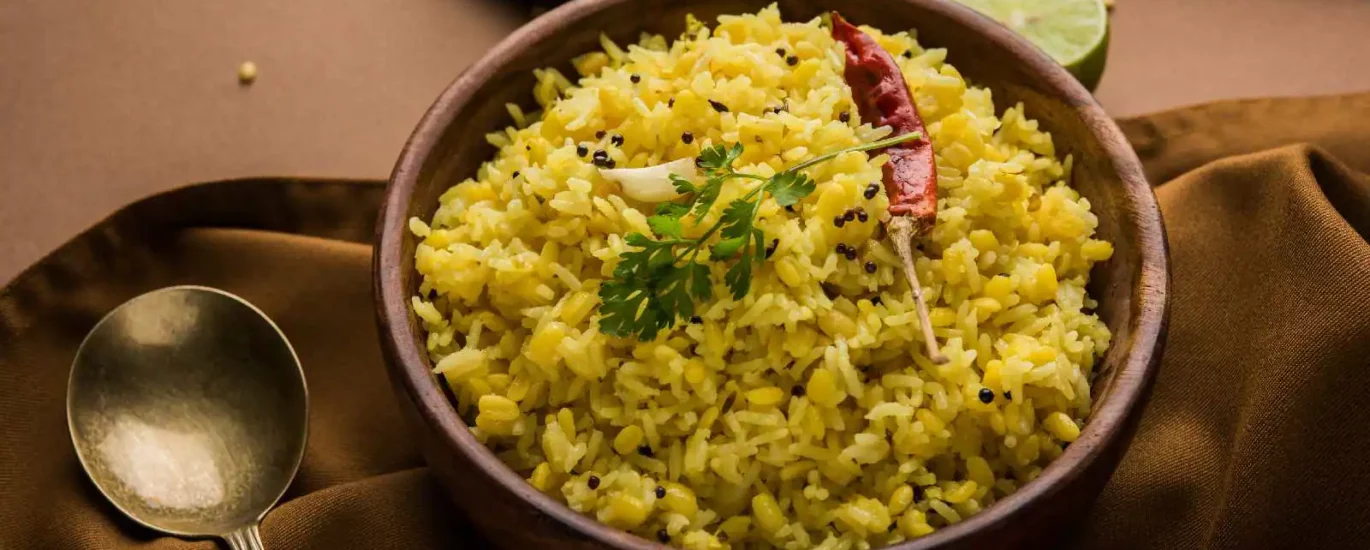
Khichdi, a traditional Indian dish made with rice and lentils, has been consumed for centuries due to its simplicity, ease of digestion, and nutritious value. In recent times, it has gained attention as a potential aid for weight loss. This article examines the nutritional components of khichdi and evaluates its suitability as a weight loss food. So, let’s dive in and explore whether khichdi is indeed good for weight loss.
Khichdi, often referred to as the “ultimate comfort food,” is a simple yet versatile dish. Its primary ingredients include rice and lentils, which are cooked together with various spices and vegetables. This humble dish has been consumed in India for centuries and holds a significant place in Ayurvedic cuisine.
The nutritional composition of khichdi can vary depending on the specific recipe and ingredients used. However, in its traditional form, khichdi offers a balanced blend of carbohydrates, proteins, and essential nutrients. The rice provides energy through complex carbohydrates, while the lentils contribute dietary fiber, proteins, and micronutrients such as iron and potassium.
Khichdi’s potential for weight loss lies in its nutrient density and balanced macronutrient profile. Let’s explore the factors that make khichdi a favorable choice for those aiming to shed pounds:
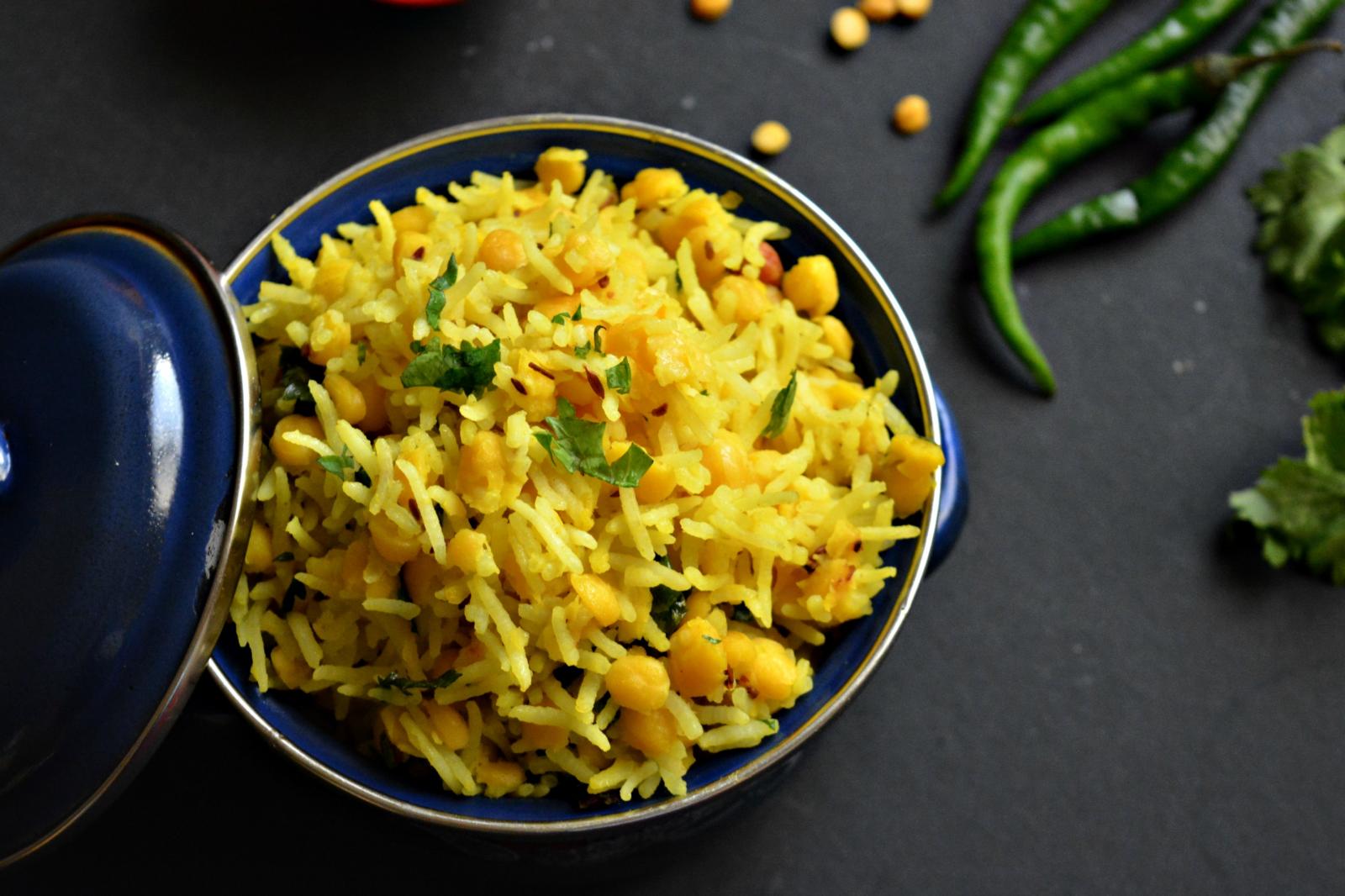
While khichdi offers numerous benefits for weight loss, it is important to consider portion sizes and overall dietary balance. Here are some tips for incorporating khichdi into a weight loss diet:
Khichdi is a nutritious and balanced meal made from rice, lentils, and various vegetables and spices. It is a popular Indian dish that can be a healthy weight-loss option.
Here are the best types of Khichdi that you can add to your weight-loss diet:
Moong dal Khichdi is the most popular Khichdi. It is a light and healthy option rich in protein and low in calories.
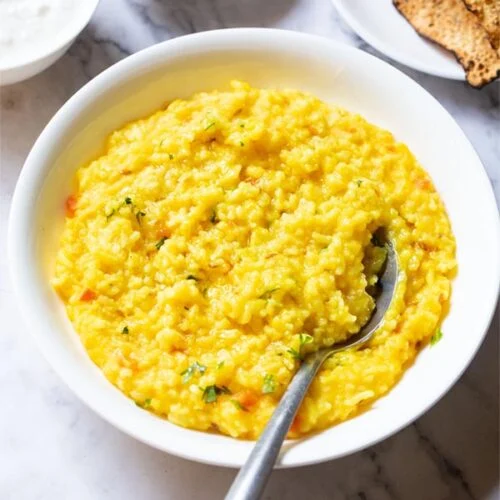
Here’s a simple recipe:
Quinoa is a high-protein grain that comes packed with essential nutrients. Here’s how you can make quinoa Khichdi:
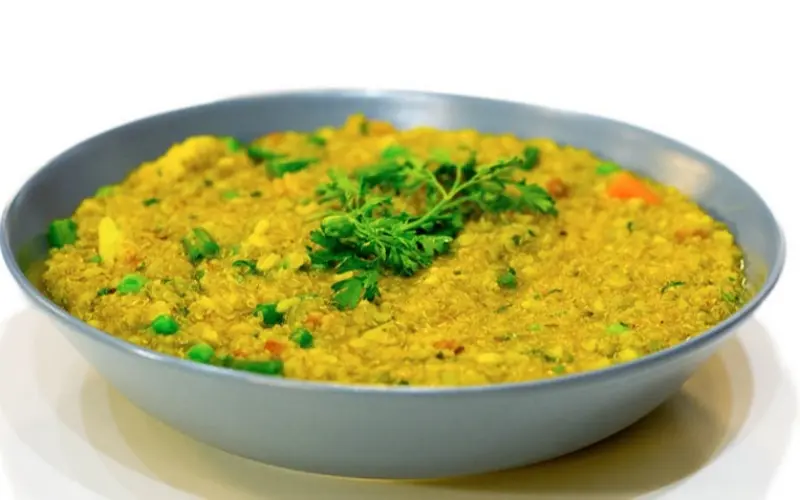
Vegetable Khichdi is a nutritious and flavourful option perfect for weight loss. Here’s how to make it:
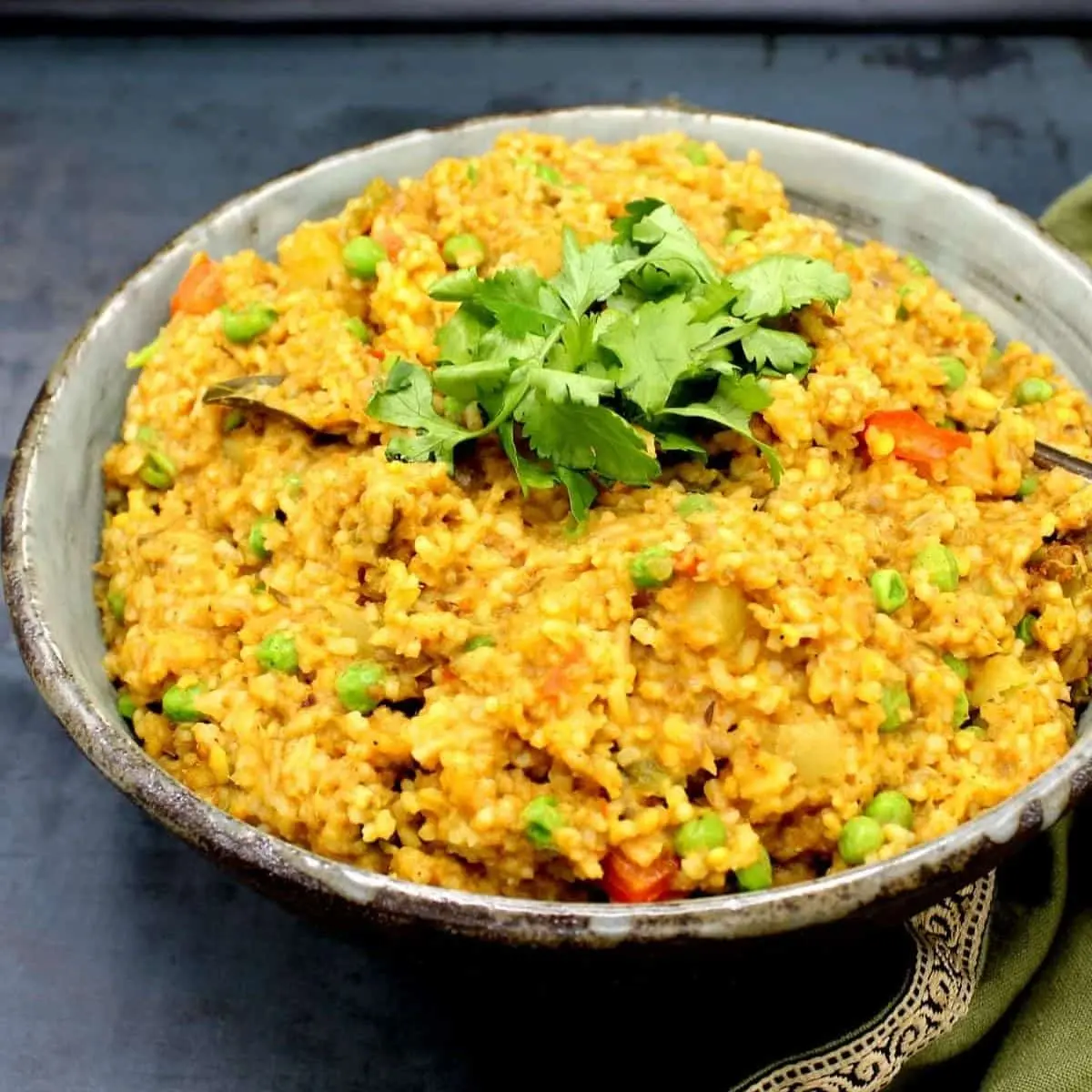
Oats Khichdi is a healthy and nutritious dish, perfect for weight loss. It has rolled oats, moong dal, vegetables, and spices. Oats are high in fibre and protein, keeping you full for longer. Here’s how to make it:
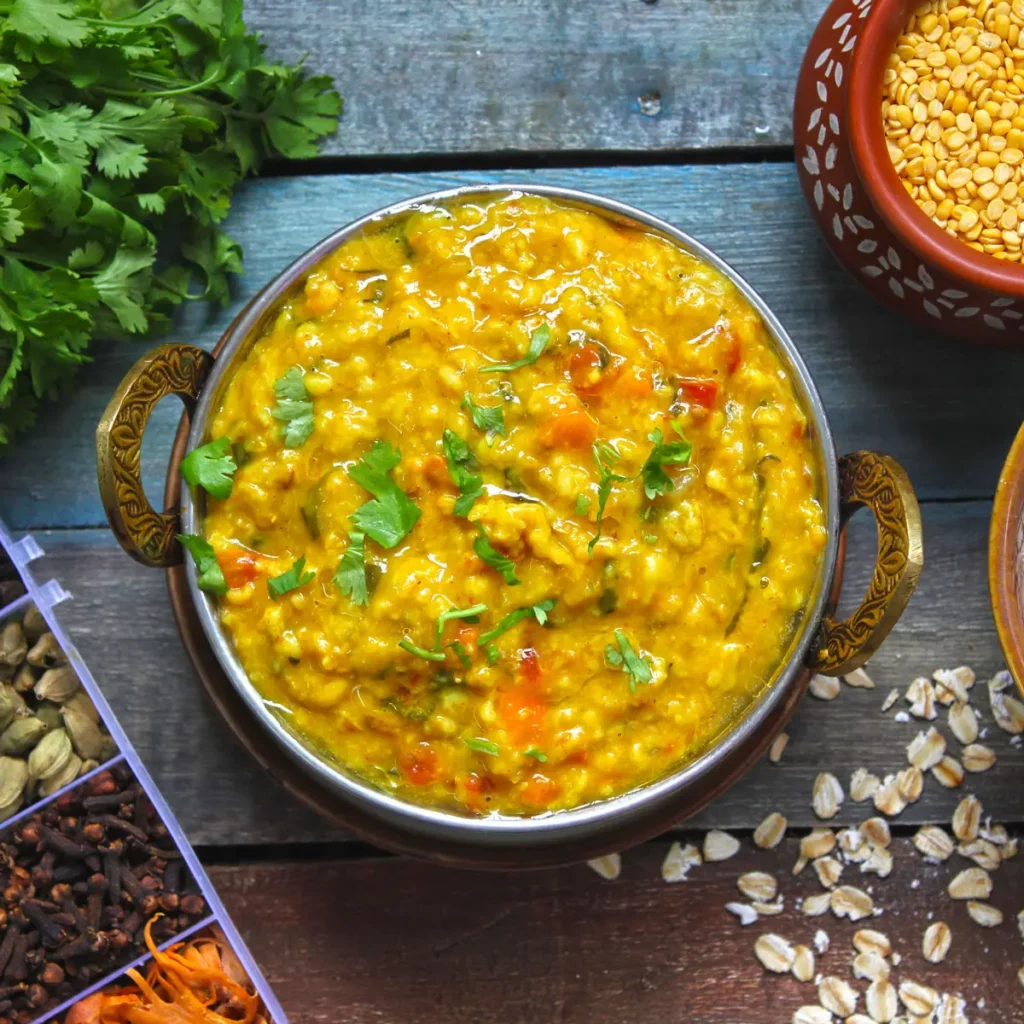
In addition to its potential for weight loss, consuming khichdi offers several other health benefits. Let’s explore some of them:
Here are some points to consider while incorporating khichdi into your weight-loss diet:
Choose the Right Ingredients: When making Khichdi, choose healthy ingredients like brown rice, quinoa, or millet instead of white rice. Use a variety of lentils like mung dal, toor dal, or chana dal to increase the nutrient value. Add plenty of vegetables like spinach, carrots, peas, and beans for fibre and vitamins.
Watch Your Portion Size: Even though Khichdi is a healthy dish, it is still essential to watch the portion size. Stick to a serving size of 1-1.5 cups of Khichdi per meal.
Add Vegetables: To make your khichdi more nutritious, add vegetables like spinach, carrots, peas, or cauliflower. It will add flavour, fibre, vitamins, and minerals.
Limit Adding Excessive Ghee or Oil: While ghee or oil may enhance the flavour of khichdi, they also add extra calories. Cook your khichdi only with a little oil/ghee to lose weight.
Be Mindful of Spices: We can use Cumin, coriander, turmeric, and ginger commonly in Khichdi and have many health benefits. However, some spice blends may contain added salt or sugar, which can add unnecessary calories. Use simple spice blends or make your own to control the ingredients.
Don’t Rely on Khichdi Alone: While Khichdi is a healthy and filling meal, it’s essential to have a balanced diet that includes a variety of foods. Don’t rely on Khichdi alone for all your meals.
Khichdi with its nutrient-dense composition, low-calorie content, and satiating properties, can be a beneficial addition to a weight loss diet. Its combination of complex carbohydrates, dietary fiber, and plant-based proteins makes it a filling and satisfying meal that supports weight management goals.
However, it’s important to remember that weight loss is a result of overall dietary patterns and lifestyle choices. Simply relying on khichdi alone won’t guarantee weight loss. We can consume it as part of a balanced diet that includes a variety of nutritious foods and regular physical activity.
Khichdi can be a valuable addition to a weight loss regimen due to its nutrient composition and satiating properties. By incorporating whole grains, vegetables, and practicing portion control, khichdi can support a healthy and sustainable approach to weight management. Remember to prioritize a well-rounded diet and an active lifestyle to achieve optimal results.
Is Fish Good For Weight Loss? Unveiling The Health Benefits And Impact On Weight
Soya Chunks For Weight Gain: A Nutrient-Dense Solution
Delicious And Healthy Chicken Recipes For Weight Loss
Black Coffee Recipe For Weight Loss: A Delicious Boost To Your Fitness Journey
A. Khichdi is a traditional Indian dish prepare with rice and lentils. It is typically seasoned with spices and served with vegetables or yoghurt.
A. Khichdi can be a healthy option for weight loss as it is low in fat, high in fibre, and contains complex carbohydrates. All these components help you feel full for longer and reduce the urge to snack.
A. Khichdi is a good source of protein, fibre, and complex carbohydrates, making it a nutritious meal. It can provide energy, support digestion, and keep you fuller for longer.
A. The calorie content of Khichdi can vary depending on the specific recipe. Still, on average, a 150 grams serving of Khichdi contains around 125 calories.
A. While Khichdi can be a healthy option for weight loss. One must have a balanced diet that includes a variety of foods. Consuming Khichdi for all meals of the day may not provide all the necessary nutrients.
A. To prepare Khichdi for weight loss, use brown rice instead of white rice and add plenty of vegetables such as spinach, carrots, or broccoli to increase the fibre content and nutritional value. Avoid using excess oil or ghee; use spices such as turmeric, cumin and coriander for flavour.
A. Some variations of khichdi ideal for a weight loss diet include quinoa khichdi, barley khichdi, and moong dal khichdi. These variations provide different flavours and textures while still being nutritious and low-calorie.
A. We can consume Khichdi for individual dietary preferences or restrictions by using specific ingredients or adjusting the spice level. For example, gluten-free Khichdi can be made using millet or quinoa, and vegan Khichdi can be made using vegetable broth instead of ghee.
A. Khichdi can be stored in a refrigerator for up to three days and reheated as needed. Still, consuming it fresh is recommended to ensure nutritional value. In addition, it is crucial to store the Khichdi in an airtight container to prevent contamination.
A. Consuming Khichdi in moderation is generally safe and healthy. However, overconsumption of Khichdi can lead to an excess carbohydrate and calorie intake, leading to weight gain.